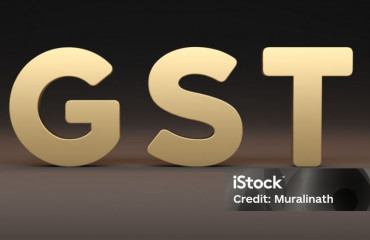
The Indian government’s Ministry of Finance addressed a question regarding Goods and Services Tax (GST) contributions from different income groups. The ministry clarified that it does not maintain income group-wise GST collection data. As a consumption tax, GST is an indirect tax collected by suppliers of goods and services from their customers, regardless of income. The government’s policy aims to mitigate the tax burden on everyday necessities for the general population. To achieve this, essential goods like unpackaged food grains, fruits, and vegetables, along with services such as education and health, are exempt from GST. Additionally, products like edible oils, life-saving medicines, and fertilizers are taxed at a lower rate of 5%. This policy structure is intended to ensure that the tax incidence remains low on items of mass consumption, making the GST system less regressive.
The Indian government's Ministry of Finance addressed a question regarding Goods and Services Tax (GST) contributions from different income groups. The ministry clarified that it does not maintain income group-wise GST collection data. As a consumption tax, GST is an indirect tax collected by suppliers of goods and services from their customers, regardless of income. The government's policy aims to mitigate the tax burden on everyday necessities for the general population. To achieve this, essential goods like unpackaged food grains, fruits, and vegetables, along with services such as education and health, are exempt from GST. Additionally, products like edible oils, life-saving medicines, and fertilizers are taxed at a lower rate of 5%. This policy structure is intended to ensure that the tax incidence remains low on items of mass consumption, making the GST system less regressive.
GOVERNMENT OF INDIA
MINISTRY OF FINANCE
DEPARTMENT OF REVENUE
RAJYA SABHA
UNSTARRED QUESTION NO. 2962
ANSWERED ON 19/08/2025
GST Contributions from the rich and the poor
#2962 Shri Ramji Lal Suman:
Will the Minister of FINANCE be pleased to state:
(a) the GST percentage collected from the bottom 50 per cent of the population at present;
(b) the amount of GST currently being collected from the top 10 per cent of income earners; and
(c) the details thereof for the last three years?
ANSWER
THE MINISTER OF STATE IN MINISTRY OF FINANCE
(SHRI PANKAJ CHAUDHARY)
(a), (b) & (c): Income group wise GST collection data is not maintained. However, Goods and Services Tax (GST) is a consumption tax that consolidates various indirect taxes into a single tax structure, streamlining the taxation process. Being an indirect tax, GST is collected by the Government from suppliers of goods and services who, in turn collect taxes from the consumers of goods and services. To keep the incidence of taxation low on items of mass consumption, goods like unpackaged food grains, fruits and vegetables and services like education and health are exempt. In addition, items like edible oil, lifesaving medicines, and fertilizers are in 5% slab.
